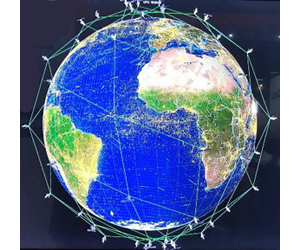Explore the connected world was the tag line for the 2017 edition of the SATELLITE conference, held March 6-9 at the Walter E. Washington convention center in Washington. Although only a 20-minute walk northeast of the White House, there wasn’t much time for either sightseeing or protesting the government, given the full conference agenda and exhibition. Lindsey Fuller, aerospace events group show director for Access Intelligence, told Space News that 14,500 registered for SATELLITE 2017, some eight percent more than in 2016, and 339 companies purchased exhibition space, up seven percent from 2016.
The satellite conference seems unique in attracting companies from the top to the bottom of the value chain. Attendees reflect a cross-section of the satellite and space industry: the CEOs of satellite operators – think Intelsat and Iridium – to engineers canvassing the microwave component companies. The participation from the top of the ecosystem enables SATELLITE to attract luminary speakers. This year, Jeff Bezos — founder of Amazon and, more recently, “spaceflight services” company Blue Origin — spoke to a packed hall and discussed his vision for reusable rockets. During the week, he announced Blue Origin’s first two launch customers, commercial satellite operator Eutelsat and LEO satellite startup OneWeb.
A series of news announcements throughout the week added buzz to the conference, including the proposed merger of Intelsat and OneWeb, which would combine Intelsat’s fleet of geostationary satellites and debt with OneWeb’s still-on-the-drawing-board-but-flush-with-investment constellation of low earth orbit satellites.
EXHIBITION HIGHLIGHTSVisiting the companies on the exhibition floor was a bit more more “down to earth,” reflecting new products and marketing strategies not quite as hyped as for the 5G market. Here’s a sample of what we saw and heard:
Anokiwave and Ball Aerospace were discussing their collaboration to develop active arrays, leveraging Anokiwave’s silicon system on a chip (SoC) capabilities with Ball’s array expertise. The two were quietly showing a 28 GHz, 64-element array radio head, developed to support 5G field trials. The radio head has programmable beam widths, with an integrated controller to steer the beam. Watch for more information about this product in Microwave Journal’s April issue.
U.K.-based AtlanTec RF, known for RF test equipment for satellite communications, announced a series of noise injection loop test translators (LTT). This LTT eliminates the need for an actual satellite when doing loop back testing, and it has the capability to add white symmetrical Gaussian noise to the simulated communications signal. For television broadcasters, AtlanTecRF introduced a satellite simulator system for satellite news gathering (SNG). Again, the system eliminates the satellite from the test setup, allowing SNG trucks to be tested in a convenient location.
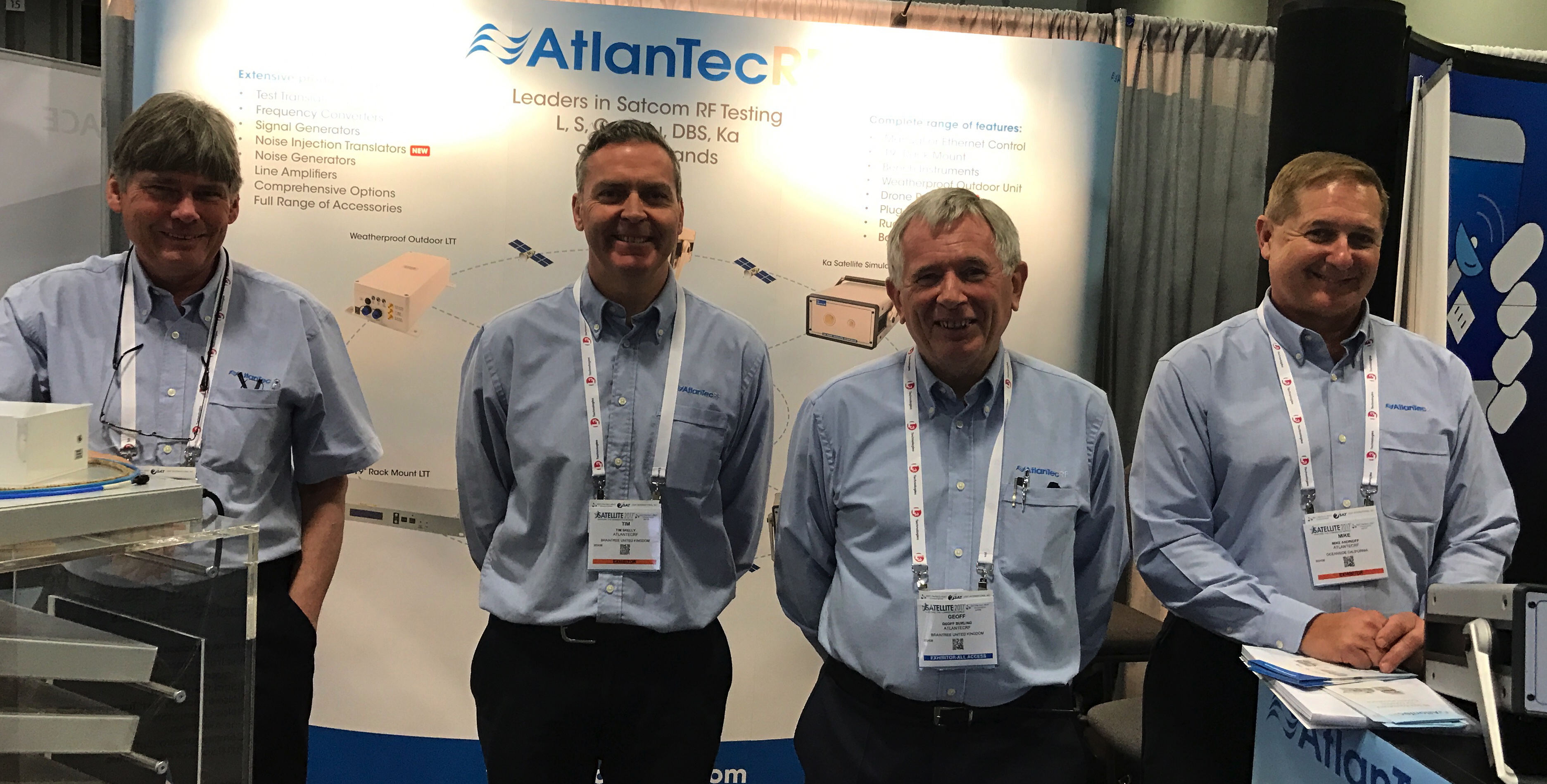
Founded in 1999, dBm develops RF/microwave test equipment and subsystems for emulating wireless links, including the impairments normally encountered: noise, delay, Doppler, phase shift and fading. dBm was featuring a new 600 MHz channel emulator with four channels.
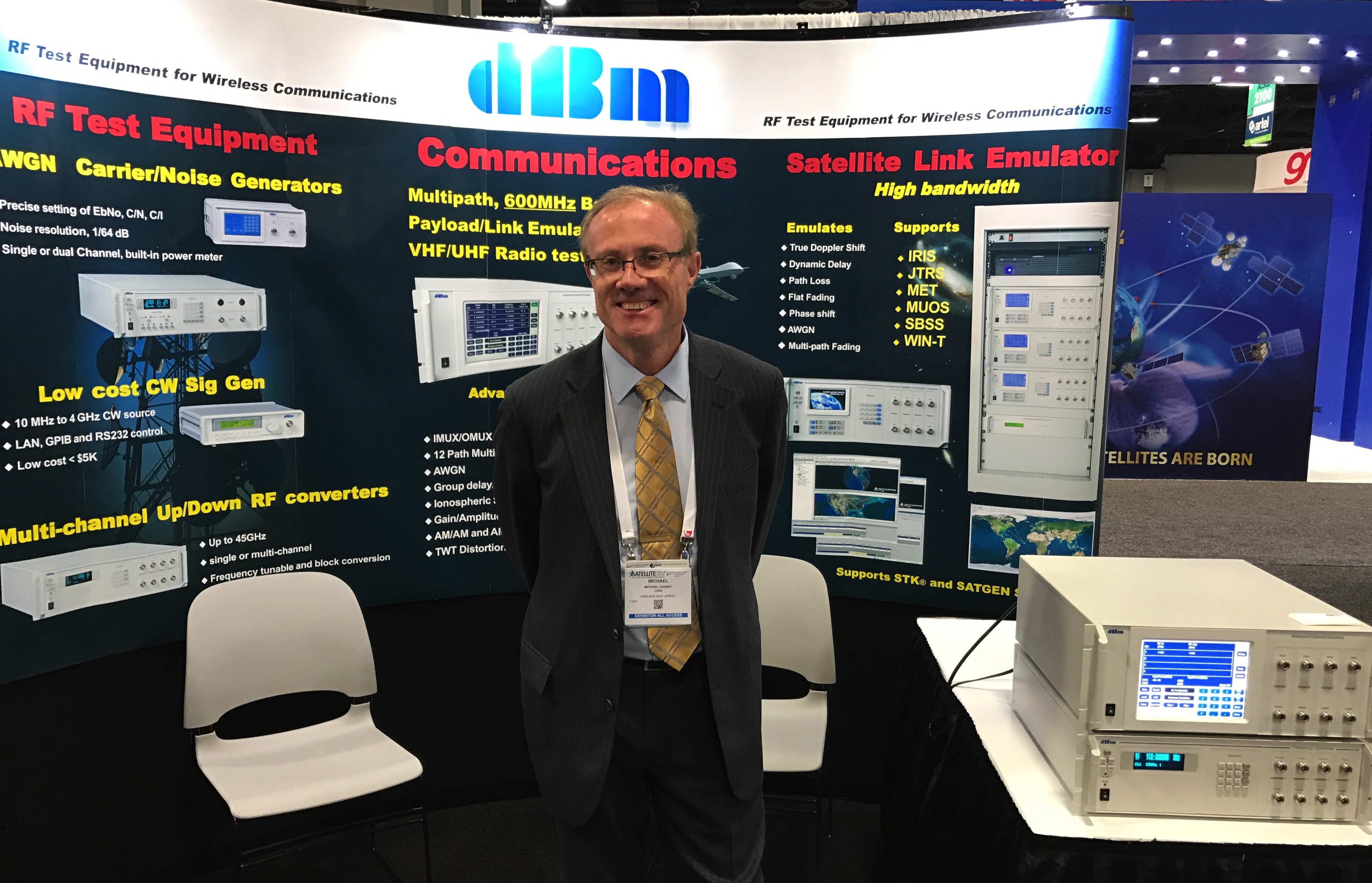
HUBER+SUHNER is well-known for their broad portfolio of connectivity products, which includes RF/microwave cables, connectors and antennas. The company’s products are used in most applications, including high reliability defense and space systems. HUBER+SUHNER is leveraging their portfolio and strong reputation to offer customers more “solutions,” combining multiple products and, in some cases, systems. At SATELLITE, the company was marketing their full range of low frequency, RF/microwave and fiber-optic products for aerospace and defense applications. The fiber-optic portfolio includes optical switches from Polatis, a U.S. company acquired by HUBER+SUHNER last year. The use of all-optical networks is growing, as they offer security in addition to bandwidth and efficiency.
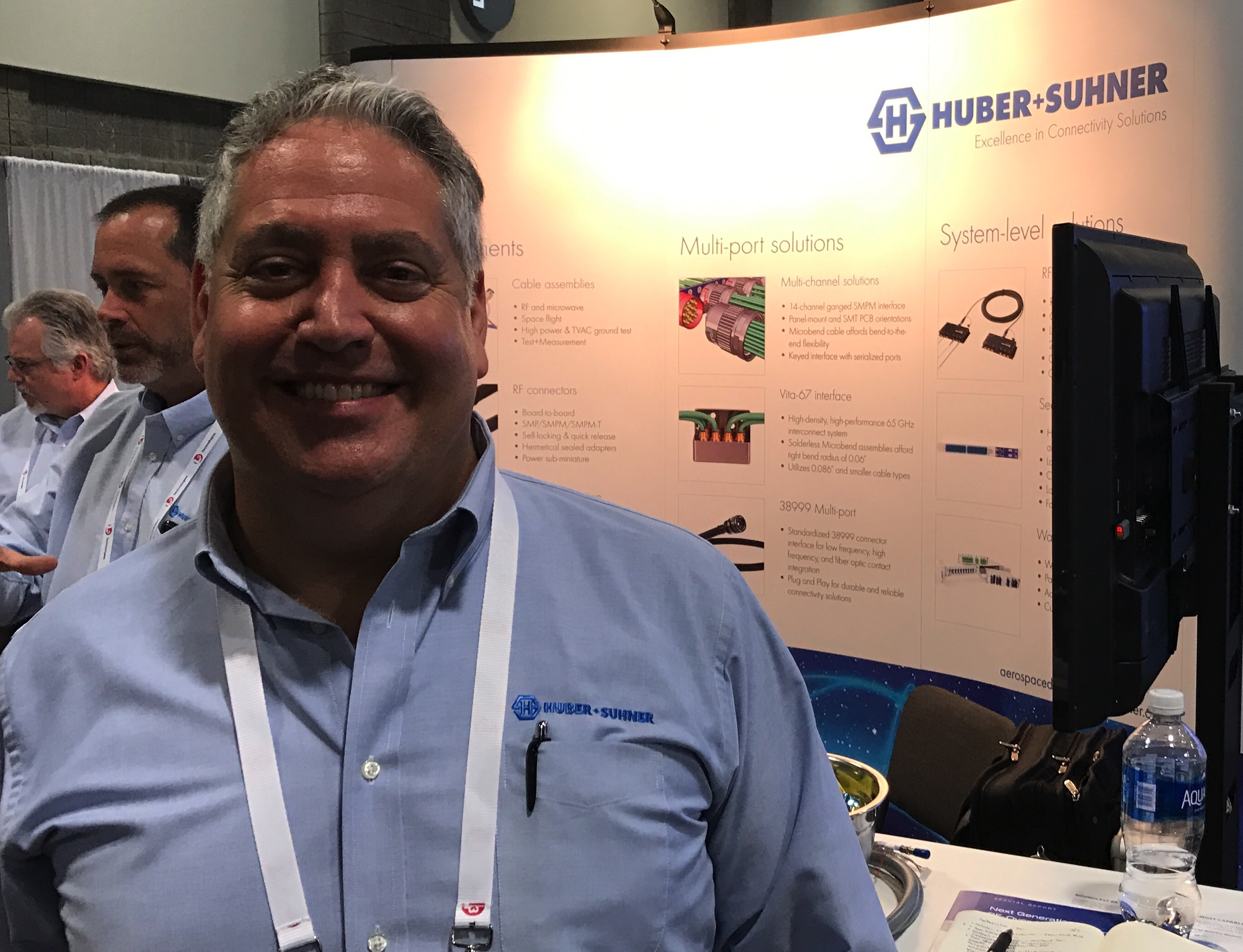
Keysight Technologies was promoting their FieldFox line of portable analyzers. Convenient for field testing, the units can be configured as a cable and antenna analyzer, vector network analyzer, spectrum analyzer or a combination of these. The FieldFox can be further tailored to the application, with frequency coverage options from 4 to 50 GHz.
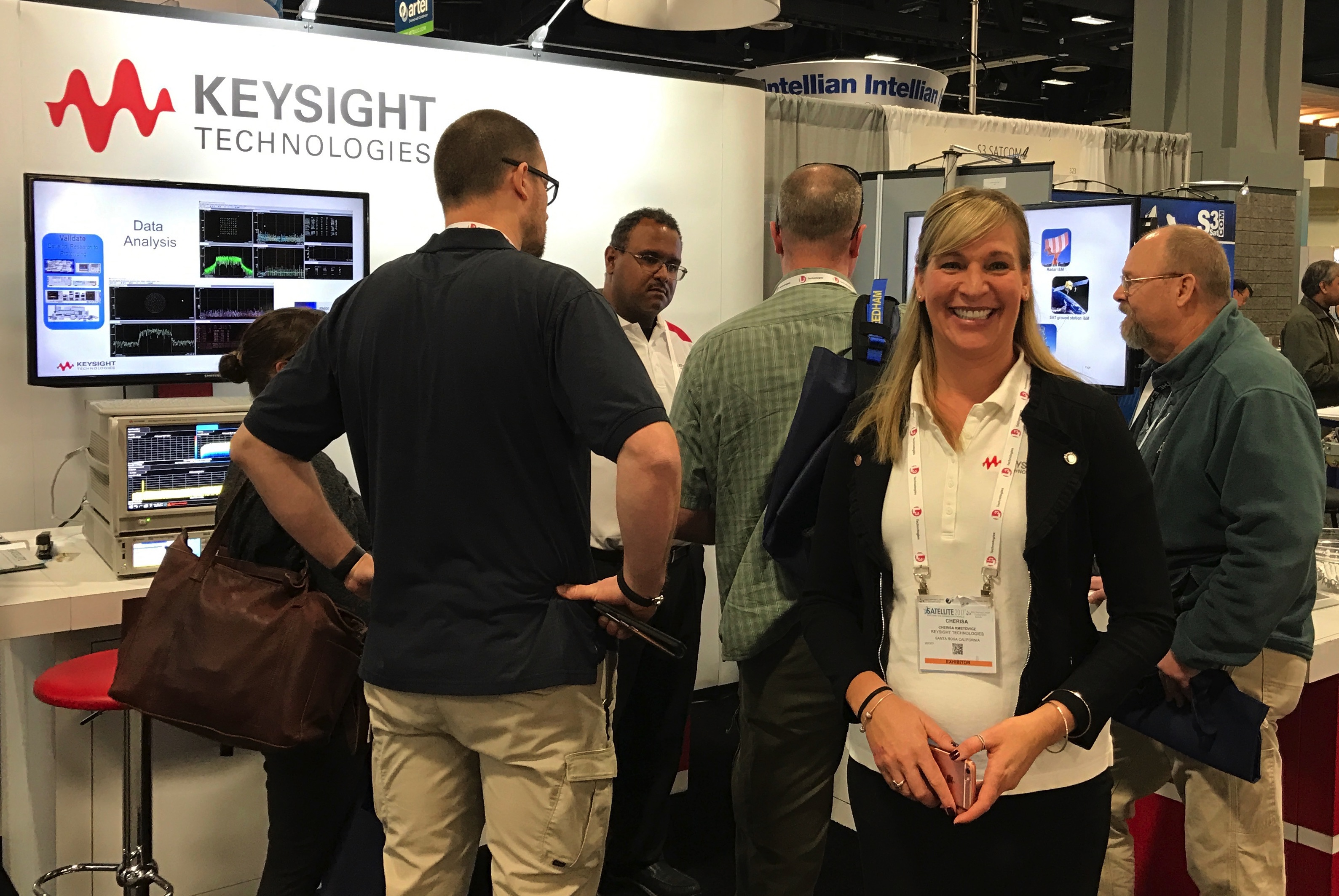
Formed in 2011, Kymeta’s vision has been to apply metamaterials technology to develop and commercialize lightweight, power efficient and steerable antennas that link satellites to moving vehicles, such as an aircraft. Kymeta’s choice of metamaterials avoids the weight, speed and reliability drawbacks of a mechanically steered antenna and the cost and complexity of an active electronically steered array (AESA). SATELLITE 2017 provided the opportunity for Kymeta to unveil their mTenna® antenna, which it describes as “the world’s first, electronically scanned satellite antenna,” and the KyWay™ terminal. Commercial trials will begin in May, as Kymeta looks for opportunities to field systems on aircraft, ships, rail cars, remote energy sites — wherever terrestrial infrastructure isn’t available or is impractical to access. In parallel with announcing the commercialization of their antenna technology, Kymeta and Intelsat jointly announced KĀLO, a satellite connectivity service that will use Kymeta’s antennas and ground terminals to access Intelsat’s global satellite capacity and offer bandwidth to underserved areas. The companies say the KĀLO business model will offer customers a flexible and easy way to buy satellite capacity, paying only for the data used. This service will be available sometime during the third quarter of 2017.
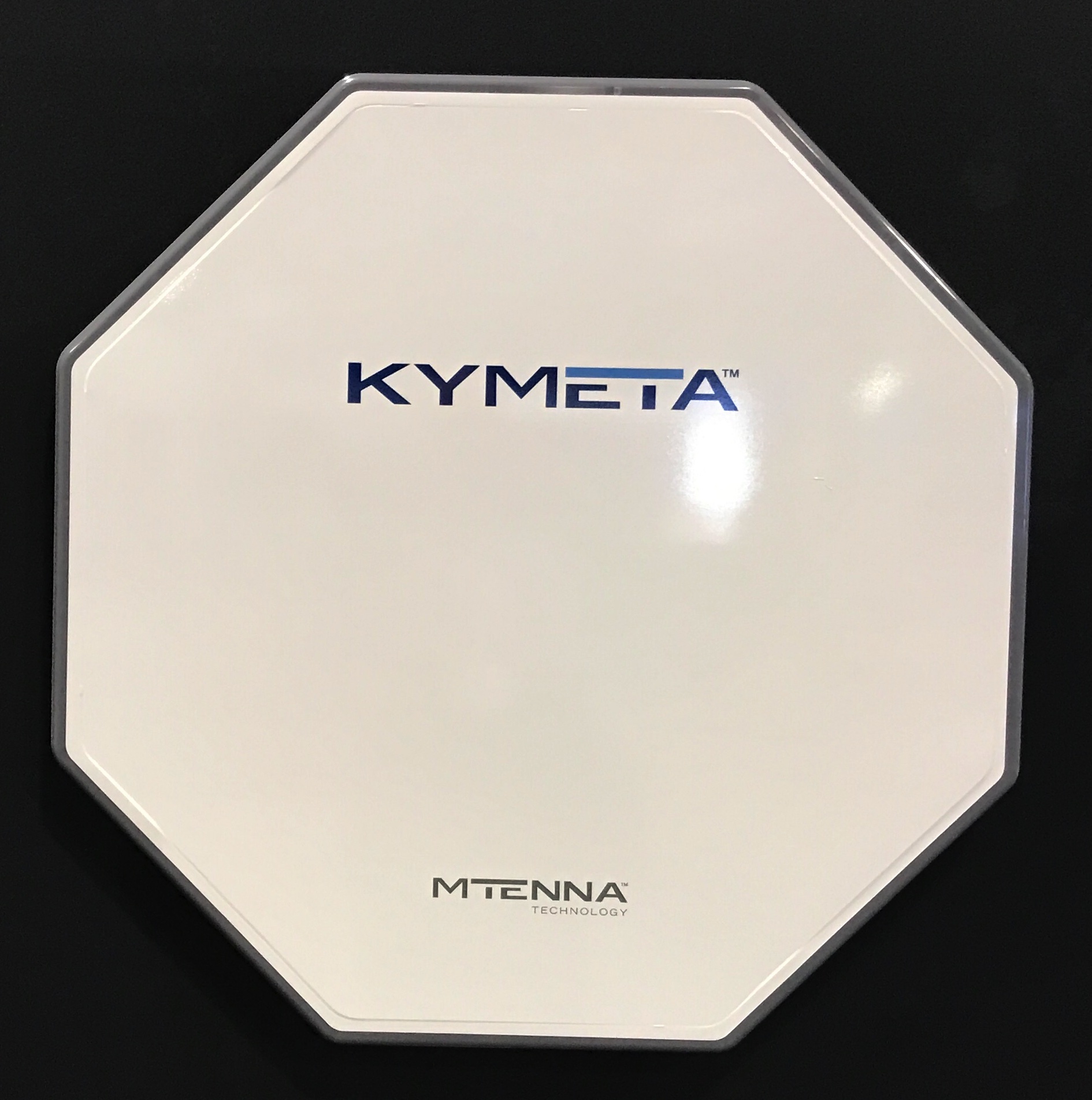
LPKF, based in Garbsen, Germany, was exhibiting their ProtoLaser equipment for rapidly prototyping printed circuit boards (PCB). Their systems can prototype multilayer PCBs with up to six layers and flexible circuit materials using DuPont’s AP and TK flexible laminates.
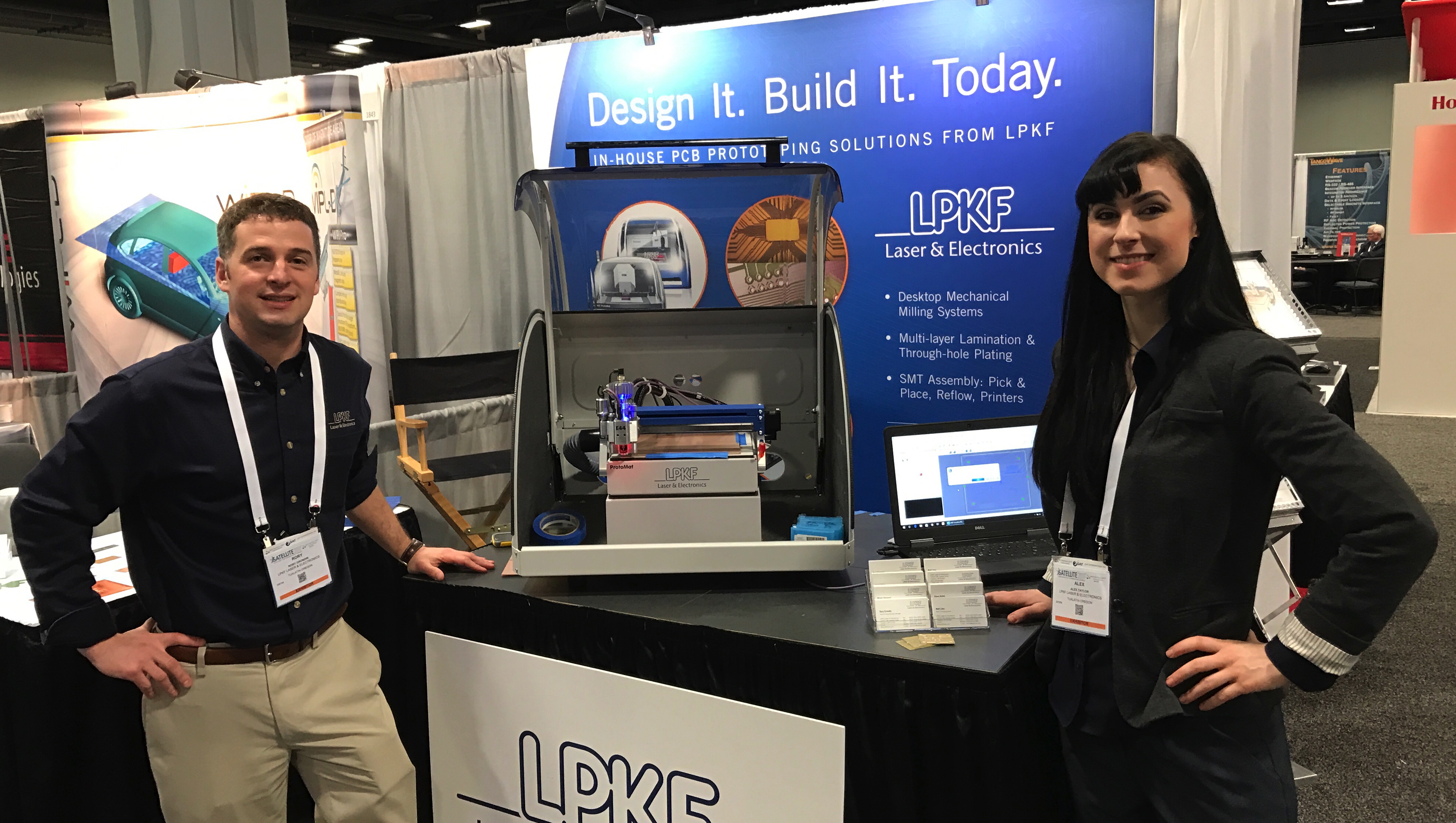
To reduce the weight of spacecraft, Mician Global Engineering has developed “bundled” waveguide, where several waveguide runs share common walls. Thomas Sieverding, managing director, said bundling can achieve a 20 percent reduction in waveguide mass, which is significant considering rocket thrust and launch cost are proportional to weight.
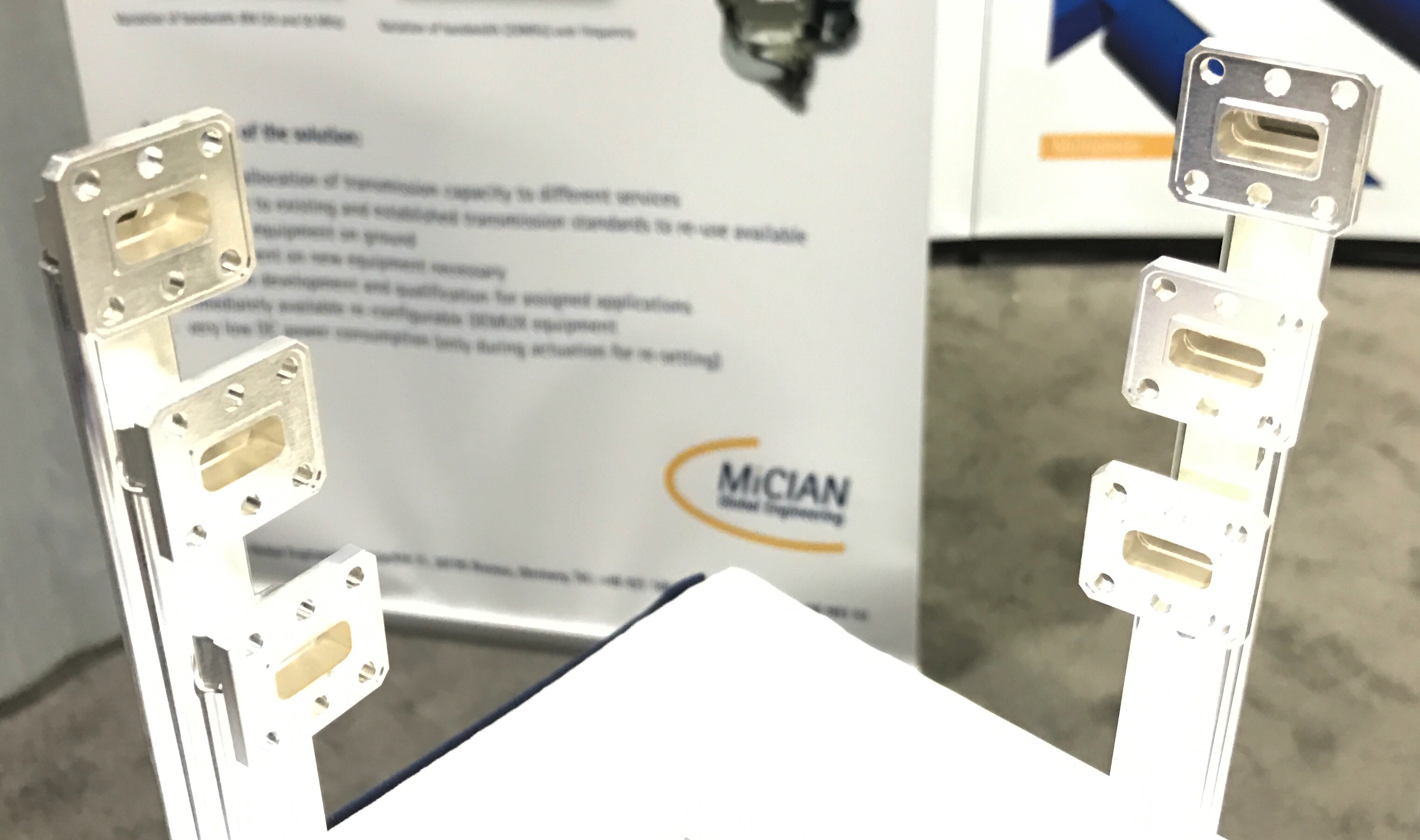
Planar Monolithics Industries (PMI) featured a 100 MHz to 18 GHz transceiver for defense, communications and test and measurement systems. The transceiver provides 0 to +10 dBm output power and has a time-gated successive detection log video amplifier (SDLVA) with a dynamic range from −80 to +10 dBm. Power dissipation is no more than 30 W. The unit has a standard VITA 67 RF interface.
Virtually all of Rohde & Schwarz’s extensive line of test and measurement solutions can be used to test satellite subsystems and ground terminals, whether the satellite is for military, communications or broadcast. At the SATELLITE exhibition, Rohde & Schwarz highlighted equipment and measurement applications for satellite use cases.

SignalCore promoted two recently introduced products, the SC5307A and SC5308A three-stage down-converters. With an input frequency range from 100 kHz to 6 GHz, they were designed for satellite links, signals intelligence, wireless communication and software-defined radios. The SC5307A is packaged in a PXIe form factor; the SC5308A is a core module with a serial interface.
Southwest Microwave offers an extensive portfolio of high performance microwave connectors, including a family of low profile, end launch designs. They support five standard configurations: SMA, with performance to 27 GHz; 2.92 mm for applications to 40 GHz; 2.4 mm to 50 GHz; 1.85 mm to 67 GHz; and 1 mm to 110 GHz.
If the name Wireless Telecom Group isn’t familiar, no doubt their brands Boonton Electronics and Noisecom are. Boonton’s USB 55000 series peak power sensor is a versatile instrument, which was aptly demonstrated with a noisy fiber-optic link. The Noisecom UFX7000A signal-to-noise generator was used to add varying levels of noise to the link. With the peak and average measurement capability of the power sensor, the crest factor of the link was monitored to determine if the noise in the channel caused signal compression. A second demo at the booth highlighted the memory buffer (Mbuff) capability of Boonton’s USB power sensors, showing how Mbuff can capture the parameters of each pulse in a pulse train. With 3 ns rise time, a resolution of 100 ps and 100,000 measurements per second, the USB 55000 system can sustain data at 100 MSPS.
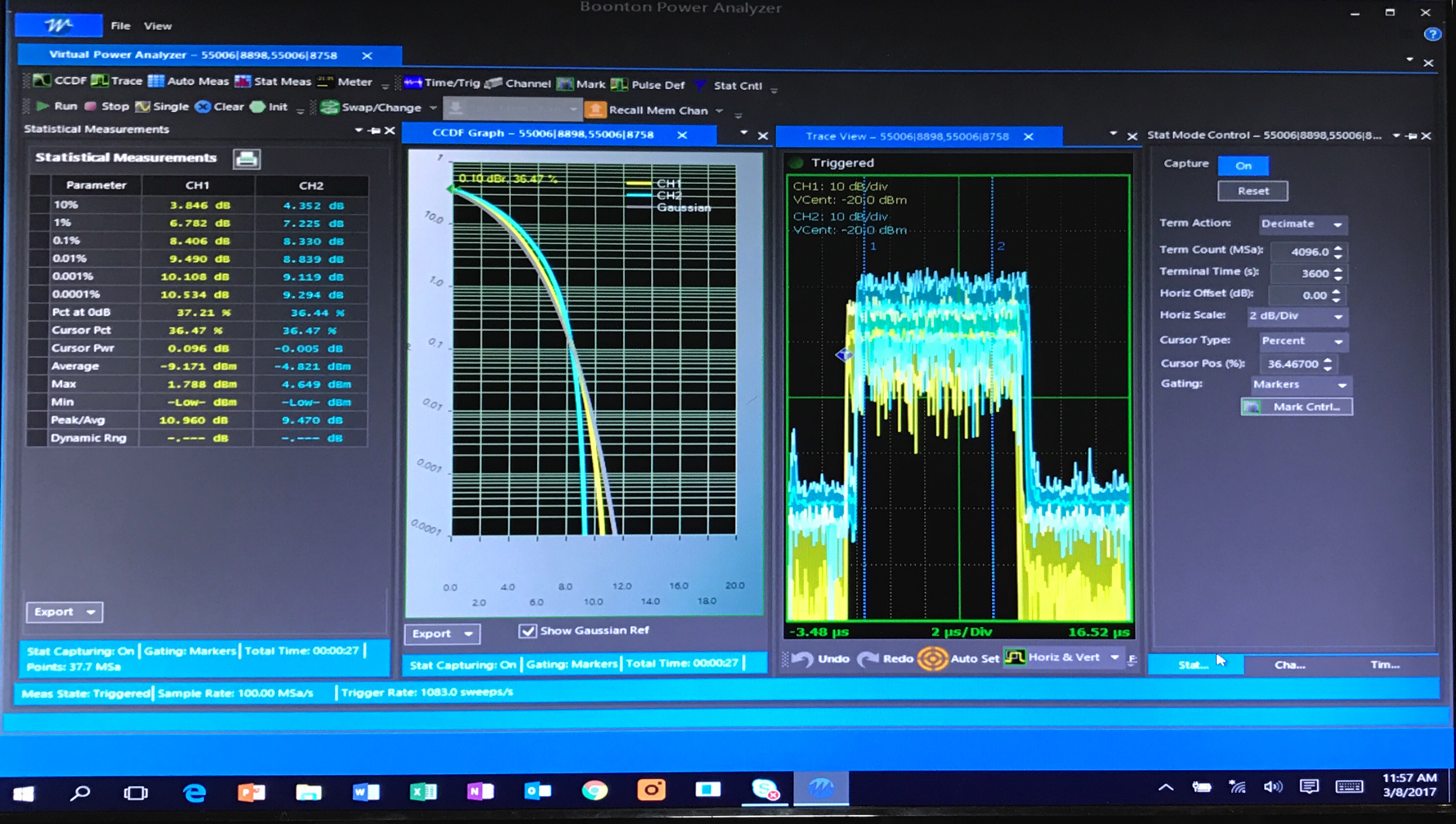
Wolfspeed was the only merchant GaN device supplier to exhibit at SATELLITE, and their presence reflects a commitment to aerospace and defense and their designation as a Trusted 1A Foundry by the Defense MicroElectronics Activity (DMEA). Wolfspeed used the conference to introduce a GaN on SiC MMIC PA developed for ground terminals in the lower Ku-Band uplink band, 12.7 to 13.25 GHz. The CMPA1D1C060D is a three-stage design that provides 60 W saturated output power (CW), 30 percent power-added efficiency and 26 dB small-signal gain — 3x higher gain than competing GaAs and GaN input-matched transistors. The MMIC, which is fabricated on Wolfspeed’s 0.25 µm, 40 V process, is currently available in die form. A packaged version is being developed.
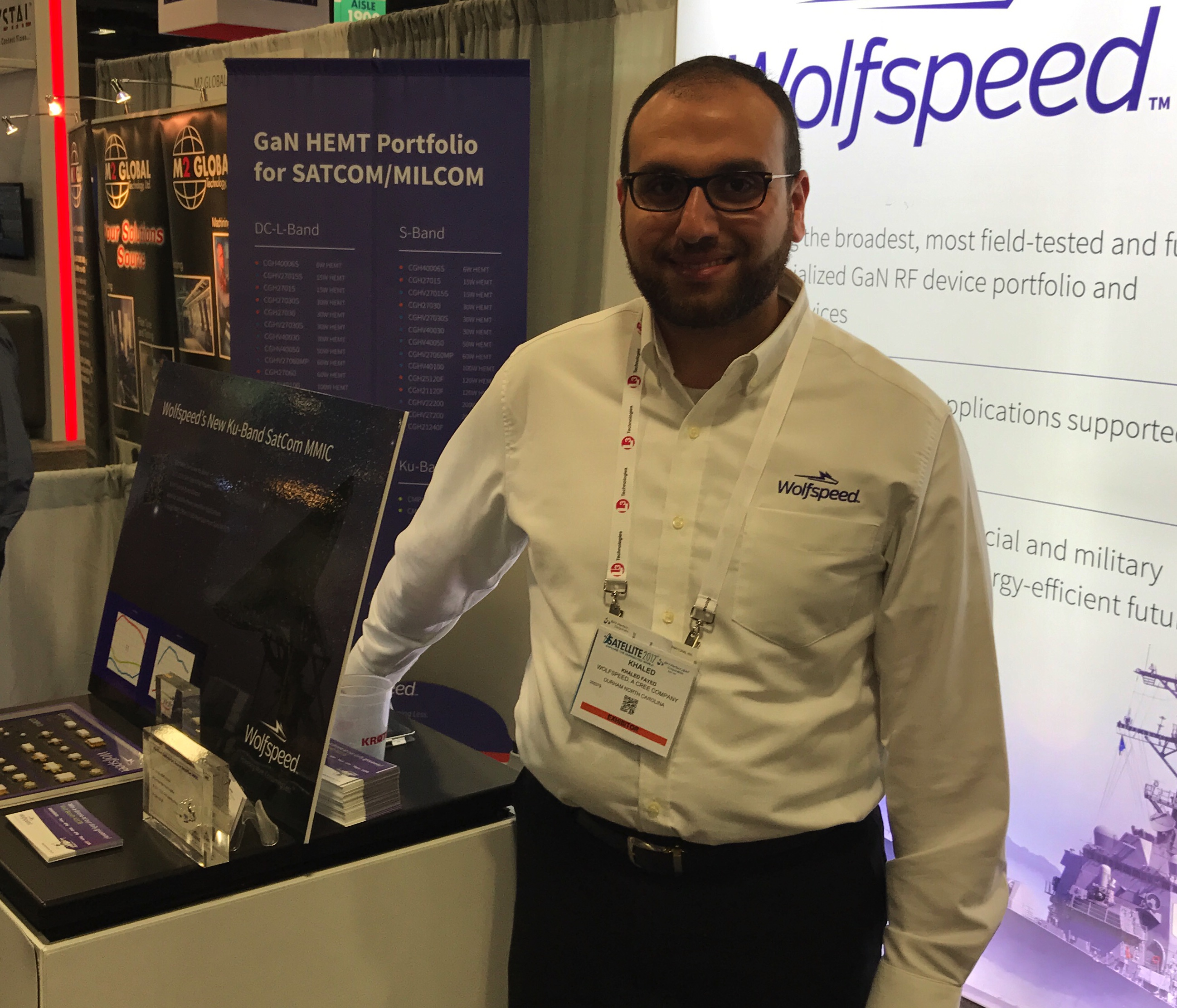
MORE PHOTOS
You can peruse more photos from the conference here on our image gallery.

